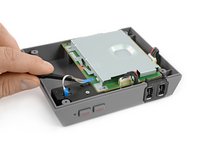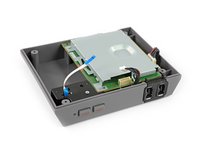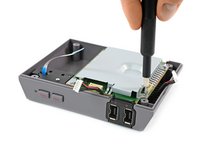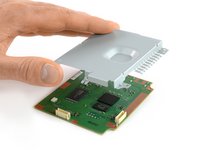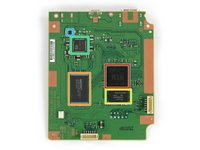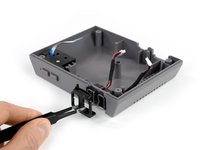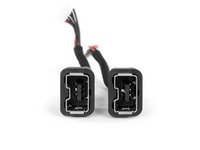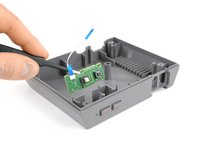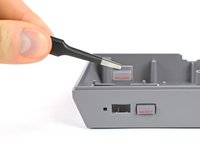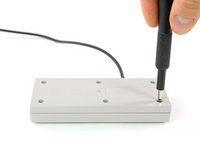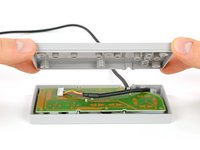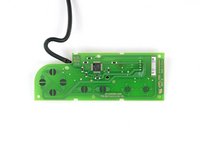crwdns2915892:0crwdne2915892:0
We're all just kids at heart, so when we found out Nintendo was relaunching the NES as a nostalgia emulator, only cuter, we were pretty stoked. What will the insides of a 2016 refresh of a 1985 Nintendo Entertainment System look like? After a bit of gaming... we're tearing down to find out!
Keen on other consoles and teardowns? Follow us on Facebook, Twitter, and Instagram to stay up-to-date on all things repair!
crwdns2942213:0crwdne2942213:0
-
-
More than 30 years after the release of the original NES console, Nintendo delights us with a fun-sized version of this classic.
-
This little emulator box comes along with:
-
30 pre-installed games
-
HDMI output
-
USB port for power support
-
1 game controller
-
Just for fun we compared a classic cartridge to this Classic Edition—they're roughly the same size. How far computers have come!
-
-
-
It's playtime! We ignore the warnings about extended gaming and start opening this treasure up.
-
We peel off some rubber feet and find standard, simple Phillips screws.
-
Lifting off the lower case, we take a look into the lid and find—nothing.
-
-
-
Turns out everything is secured in the lower case, and "everything" isn't all that much.
-
We immediately start punching through cables.
-
You heard that right, Mario may look like he's head bopping those blocks, but it's actually his fist!
-
A grand total of three connectors (button board, controller 1, and 2) later: Level 1 complete!
-
-
-
-
The motherboard is secured under a nice metal shield, likely for heat dissipation and probably structural support.
-
De-shielded we see the mighty fields of... wait these look like chips we've seen before.
-
Allwinner R16 quad core ARM Cortex A7 processor with a Mali-400MP2 GPU core
-
512 MB of Macronix MX30LF4G18AC 4 Gb NAND Flash memory (as opposed to the Spansion branded memory found in the SNES)
-
256 MB of SK hynix 2 Gb DDR3 SDRAM (H5TQ2G63GFR-RDC)
-
X-Powers AXP223 Power Management IC
-
Richtek RT7295A 3.5 A synchronous step-down converter
So, the flash is faster than the RAM?
2Gbit is overkilled for NES applications. But the flash itself contains some additional code that points to the built-in 30 games. That's probably why Nintendo decided to invest more bandwidth on the flash.
-
-
-
While the console only comes with one controller, you've got the classic Player 2 option available. At least until we remove these ports!
-
As you may have guessed, these ports are updated from the controller ports of the original NES and Famicom units.
-
We know the standard "blow on it" fix doesn't always work, so we're happy to see modularity here. Unfortunately, the USB and HDMI ports were both soldered to the motherboard.
-
-
-
The final countdown brings us to: the button assembly!
-
This self-proclaimed daughterboard contains the (nicely labeled) power and reset button, as well as a status LED.
Cette carte fille vient de rendre l’âme, savez vous s’il est possible d’en trouver ?
What are the specs of the ribbon cable?
-
-
-
And now for the bonus level: controller teardown!
-
The screws on this controller are readily visible, no rubber plugs here. Inside we find: a bare board with a single connector.
-
The cable is nicely threaded inside to allow some slack, to relieve stress on the connector.
-
The front side of the board is almost as bare. A single chip, some passive components, and some contact patches for the buttons.
-
-
-
That's all there is! While there aren't many components, there are definitely more than 8 bits.
-
Okay, we admit, that was a pretty dumb joke.
-
- Only standard Phillips screws are used.
- No breakable plastic clips or strong adhesive is used.
- Many components are modular including the button board and controller ports.
- The NES Classic ships with solid state games, this reduces the wear on the device, but means upgrades are probably not an option.
- The HDMI and USB ports are soldered to the mainboard which makes for a more complicated repair.
crwdns2935195:0crwdne2935195:0
crwdns2935097:0crwdne2935097:0
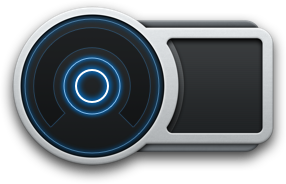

crwdns2935199:0crwdne2935199:0
crwdns2947412:011crwdne2947412:0
It would be nice to see a teardown comparison to the original NES.
I agree completely. <3
Upgrades are definitely an option! Additional games can be flashed to the system via an app, game roms, a USB cable and a PC. Because of this, the orange minus icon, should be changed to a green checkmark.
It is not intended by Nintendo to add games but it is definitely possible (I also flashed some extra games on it). The manufacturer does not offer any software for editing, therefore it is not red, but orange :)
No picture of the back?
Why is there a photo of only one side of the mainboard?
The other side is mostly blank with only one chip and some circuitry. You can see the back of the board in this little disassembly video we shot two years ago: https://www.facebook.com/iFixitEU/videos...
Okay, this must be one of the first release boards. What is the mount in the rear right for? The SNES doesn't have it, and I believe the second release is the same as the SNES (but I won't open my wife's NESC to find out).
hahahahahahaha
Hi, our 2nd controller port has stopped working. The one thing that is hard to fix!! Any advice on what we can do?
Easiest would probably be to search for a used/defective Nintendo Classic on the web and salvage one of the ports. If you try to fix the port itself, take pictures so you can share a guide with us afterwards :)













